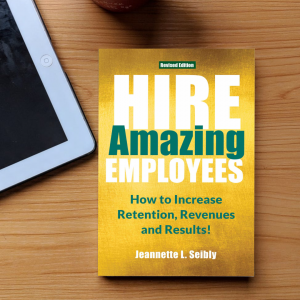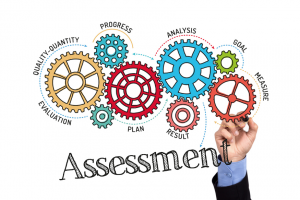
What you ignore is that there is a choice regarding ‘how’ you listen to advice! Jeannette Seibly
Many people love to give advice … solicited and unsolicited. But many people don’t enjoy receiving it, and even when the advice is valid, they fail to use it to improve their issues, situations, or relationships.
The problems with giving and receiving advice:
- we are overconfident about our perspectives
- we fail to define the true problem
- we fear hearing what we don’t want to hear
- we learn we are not committed to doing the “real” work required
When Jonathan accepted a job to work for a well-respected leader, he looked forward to it. But when he shared the successes of his first assignment, the leader gave unsolicited advice for future improvements. Jonathan felt offended. He’d wanted to impress the leader by succeeding without help or advice.
When he shared his upset with Julie, his coworker, she laughed. “Here’s the deal. You can listen to his advice and run with it. Or modify it. Or, give factual reasons it won’t work. Or, feel offended … and most likely fail. But I would recommend you listen to his advice with an open mind. We focus on delivering great results in this company. Sometimes you may need to put on extra armor like the rest of us when he gives advice … but his style isn’t going to change. And he’s usually right on! It’s always your choice on how you listen. But feeling offended won’t help you succeed in your career here or anywhere else.”
As results-oriented leaders, your willingness to listen to advice is how your teams and you achieve results further and faster.
How to Listen When Receiving Advice
Set Aside Your Ego. If you remember nothing else from this article, set aside your ego. When you are open to advice, regardless of how it’s offered, you’ll succeed further and faster in your career. Then, stay humble when deciding whether or not to accept the advice, and don’t let your blind spots derail you.
Ask Questions. “Can you please clarify what you mean? I want to be sure I understand.” OR, “Can you show me an example?” Don’t be obtuse … listen and be open to learning. Then, thank them. Now, either take their advice, modify it, or discard it.
Be Coachable. Discuss the advice given with your mentor or executive coach. Even the most off-the-wall suggestion can make a positive difference, or not. It depends on how you listen. Remember, the recommendation could be the catalyst for your success, or it could be naysayers expressing their opinions based on their own experiences. Either way, the advice taken or discarded can become a future powerful story when offering guidance or counsel to others.
Set Aside Being Offended or Annoyed. Being offended is not for professional people. And, being annoyed is something you can train yourself to stop doing. Why? There is usually a gold nugget when you truly listen. But, of course, if someone is deliberately offensive, move on.
Be Prepared When Asking for Help. You’ve seen people overwhelmed when asking for advice on social media. Instead, talk with one or two trusted advisers (your executive coach or a mentor). First, share the problem in 20 words, briefly outline what has been done, then ask, “what’s missing?” Now listen without being defensive. Remember to take notes and take focused action!
Your ability to listen to advice, whether right on or not, will take you further and faster than going it alone. Jeannette Seibly
How to Give Advice that is More Likely to Be Heard
Ask First. Are they open to hearing advice from you? If not, move on. If you’re the boss, ask if you can provide insights into a challenging issue, situation, or relationship they are experiencing. They usually will say “yes” and are now more open to listening to you. If they say “no,” you may need to make an unpopular management decision if the challenge continues.
Limit It. Offer only one or two valid points. If you offer more, you’ll lose their willingness to listen or their ability to comprehend of lot of information. Either use the sandwich approach or the straight talk approach, depending on the person.
Do it 1:1. Use the old saying, “Praise publicly, offer constructive guidance privately.” Always.
Be Open to Taking Advice. When you are willing and open to taking advice, your ability to offer advice and guidance to others increases tenfold.
©Jeannette Seibly 2022 All Rights Reserved
 Jeannette Seibly is The Leadership Results Coach. She has been an award-winning international executive and family business management consultant, keynote speaker, and author for over 29 years. Her focus is to guide leaders to make a positive difference. Feel stuck moving your team forward? Want straightforward counsel on how to do it? Let’s chat! Contact Jeannette for a confidential conversation.
Jeannette Seibly is The Leadership Results Coach. She has been an award-winning international executive and family business management consultant, keynote speaker, and author for over 29 years. Her focus is to guide leaders to make a positive difference. Feel stuck moving your team forward? Want straightforward counsel on how to do it? Let’s chat! Contact Jeannette for a confidential conversation.
A note from Jeannette about giving and receiving advice: If you are easily offended or annoyed when someone offers you advice, it’s time to reconsider how you listen. Successful leaders are open to receiving solicited and unsolicited advice. When doing this, they often move forward further and faster in their careers, in their projects, and in realizing their dreams. Have questions about how to listen when giving and receiving advice? Most do! Let’s chat now!
 Are you asking the right job interview questions? When hiring new employees, ask about their ability to handle mistakes. Why? 90% of new hires fail because they dismiss coaching or advice about their poor interpersonal skills. Get your copy of the newly released, Hire Amazing Employees: How to Increase Retention, Revenues and Results! and suggested interview questions to get you started
Are you asking the right job interview questions? When hiring new employees, ask about their ability to handle mistakes. Why? 90% of new hires fail because they dismiss coaching or advice about their poor interpersonal skills. Get your copy of the newly released, Hire Amazing Employees: How to Increase Retention, Revenues and Results! and suggested interview questions to get you started


 Jeannette Seibly is The Leadership Results Coach. She has been an award-winning international executive and family business management consultant, keynote speaker, and author for over 29 years. Her focus is to guide leaders to make a positive difference. Feel stuck moving your team forward? Want straightforward counsel on how to do it? Let’s chat!
Jeannette Seibly is The Leadership Results Coach. She has been an award-winning international executive and family business management consultant, keynote speaker, and author for over 29 years. Her focus is to guide leaders to make a positive difference. Feel stuck moving your team forward? Want straightforward counsel on how to do it? Let’s chat!  When employees “quietly quit,” it is often due to you quickly hiring on instinct and then slowly firing for poor job skills. It’s time to develop a strategic selection system to improve how and whom you hire! Get your copy of the newly released,
When employees “quietly quit,” it is often due to you quickly hiring on instinct and then slowly firing for poor job skills. It’s time to develop a strategic selection system to improve how and whom you hire! Get your copy of the newly released, 
 Why are employees “quietly quitting?” One of the critical issues is poor job fit for employees! And poor job fit for their bosses who got promoted without the skills to be leaders. It’s time to develop a strategic selection system to improve your hiring results! Get your copy of the newly released,
Why are employees “quietly quitting?” One of the critical issues is poor job fit for employees! And poor job fit for their bosses who got promoted without the skills to be leaders. It’s time to develop a strategic selection system to improve your hiring results! Get your copy of the newly released, 





